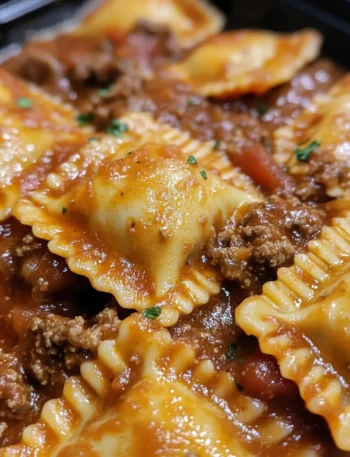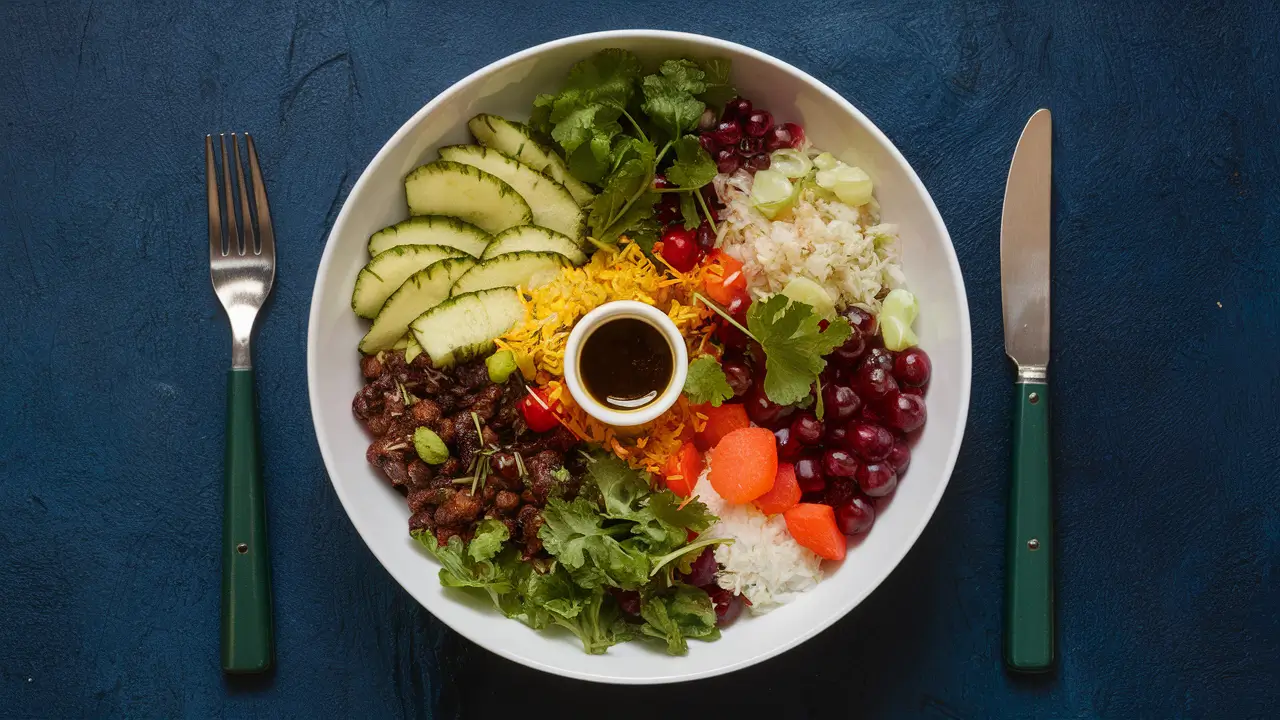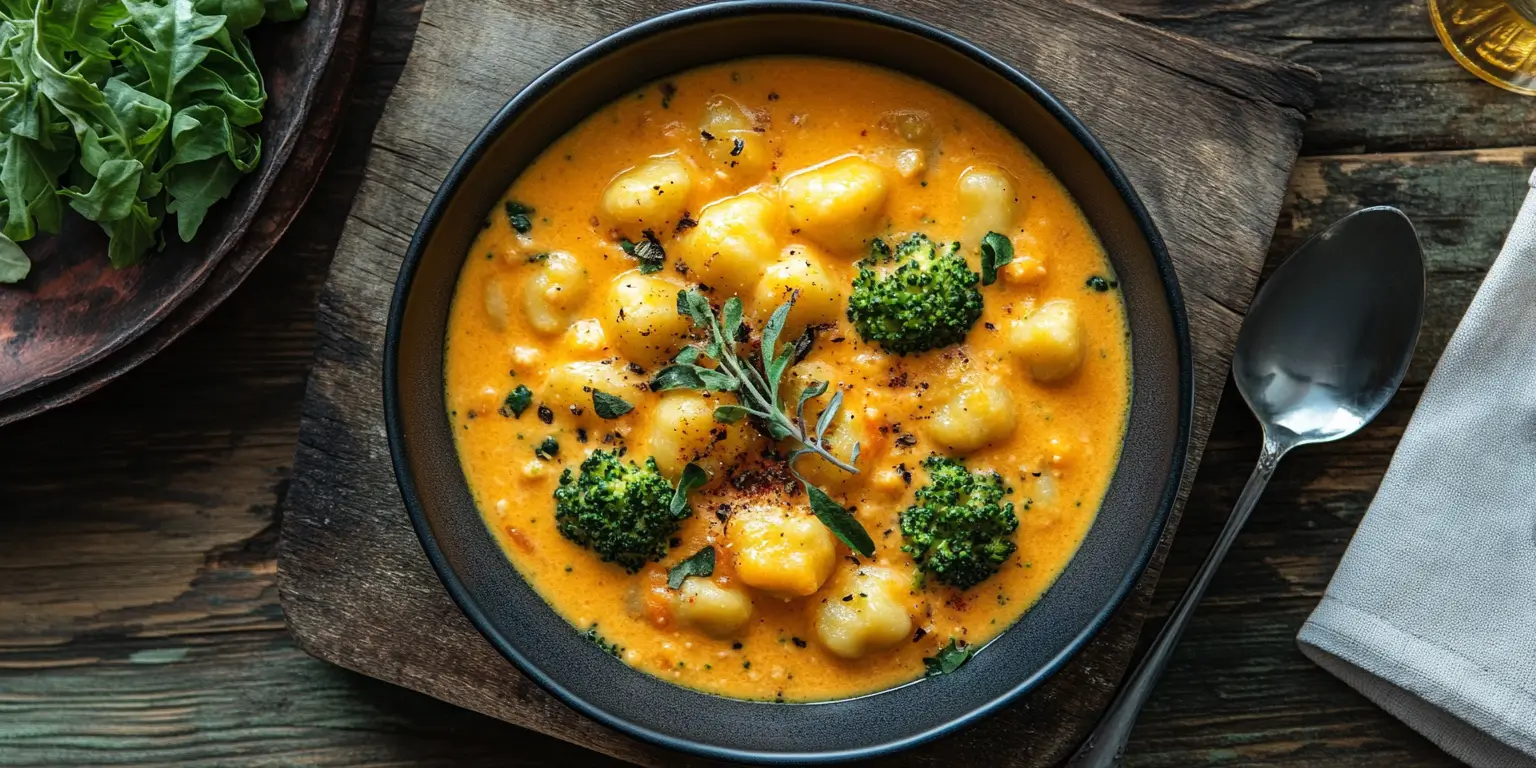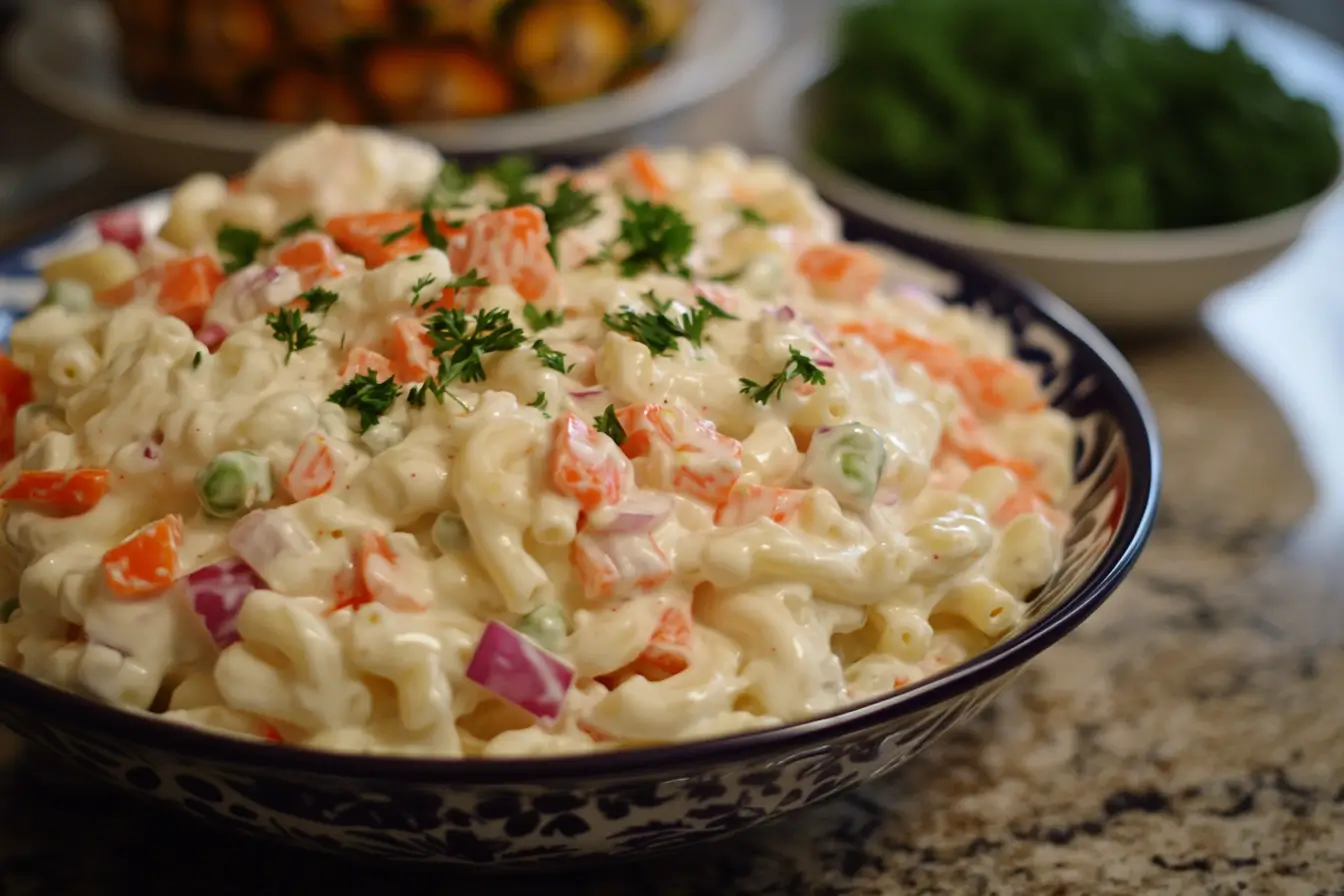Nothing beats the feeling of sitting down to a comforting meal that didn’t keep you chained to the stove. In this one‑pan chicken sausage and broccoli orzo, creamy pasta mingles with smoky sausage, tender broccoli and a bright splash of lemon. The orzo cooks directly in the broth, soaking up the savory goodness from the sausage and vegetables, and the dish goes from pantry to table in about half an hour. This long‑form recipe guide shows how to make it, why it’s so delicious, and how to personalize it to your taste while staying balanced and nutritious. With lean protein, fiber‑rich vegetables and versatile pasta, you can enjoy a wholesome any night of the week. 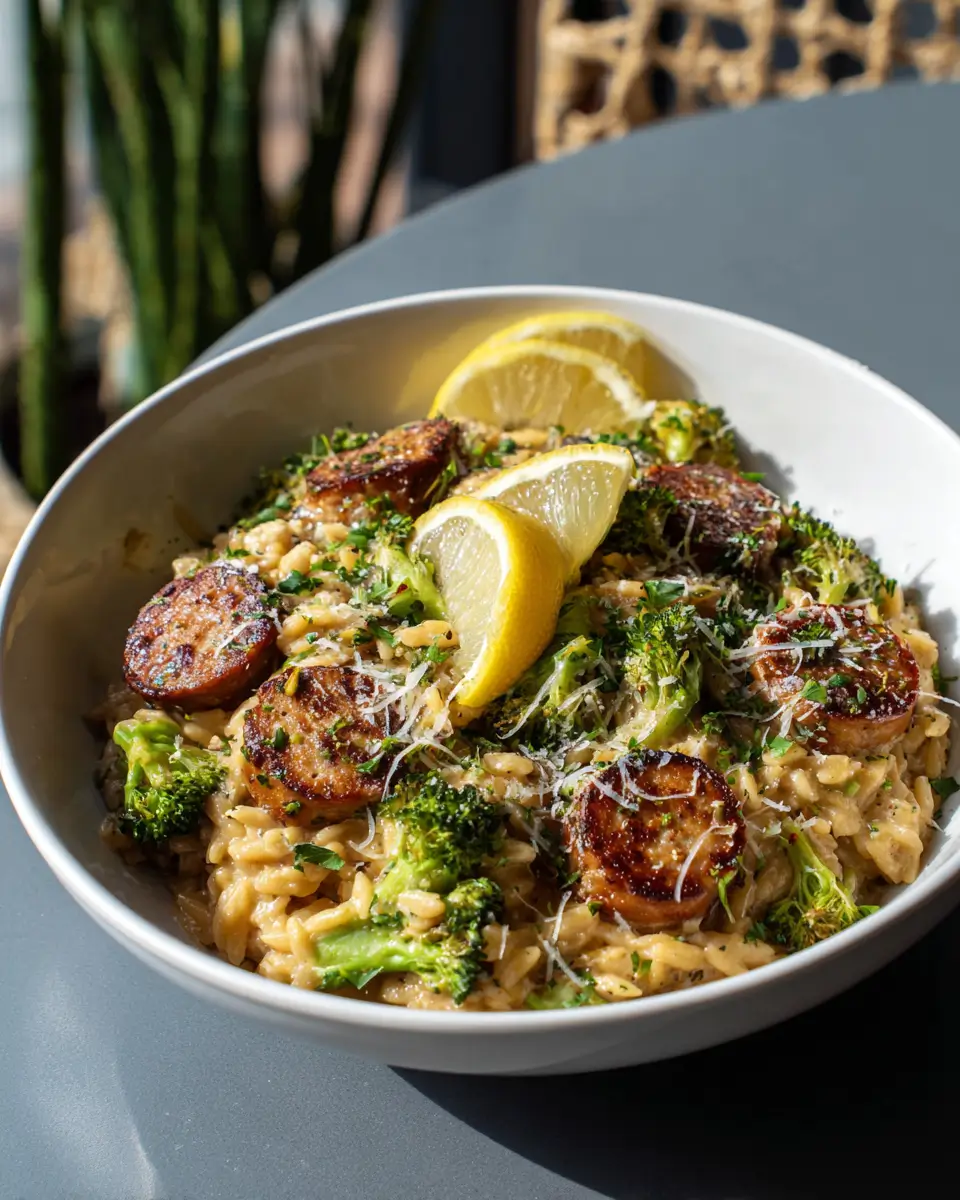
Why You’ll Love This One‑Pan Dish
It’s truly one‑pan and fuss‑free. One of the key benefits of one‑skillet meals is the minimal cleanup. Recipes like this chicken sausage orzo are designed so the pasta simmers in the same pan as the meat and vegetables, eliminating the need for a separate pot. The Balanced Nutritionist notes that their version of a similar skillet dinner requires no pasta boiling and is ready in about 30 minutes. Less equipment means less dishwashing, which is a welcome relief on busy nights.
Speedy prep and cooking time. From slicing sausage to chopping broccoli, the prep work here is minimal. The sausage browns quickly in hot oil, aromatics cook in just a couple of minutes and the orzo finishes in about ten minutes. Recipes like this often boast dinner in 30 minutes because orzo is a small, rice‑shaped pasta that absorbs liquid fast. The broth does double duty as cooking liquid and flavor infusion, shaving minutes off the total time.
Balanced and nourishing. Chicken sausage provides lean protein and is lower in fat and cholesterol than other sausages. It also supplies vitamins like B12 and minerals such as zinc and selenium. Broccoli contributes fiber and antioxidants; the nutrients in broccoli have been linked with reduced inflammation and a healthier heart. When you use whole‑wheat orzo, you add extra fiber and plant protein compared with refined pasta. Fiber helps slow digestion, makes you feel fuller longer and can reduce the risk of chronic diseases. Cheese brings protein and calcium for strong muscles and bones.
Flavor without heavy sauces. Fully cooked smoked chicken sausage comes pre‑seasoned, delivering garlic, herbs or spice right into the dish. Because the sausage is browned at the beginning and then returned to the pan at the end, its savory drippings flavor the orzo, eliminating the need for a butter‑laden sauce. A squeeze of lemon and a sprinkle of Parmesan finish the dish with brightness and umami.
Easily customizable. You can substitute almost any protein or vegetable. The Balanced Nutritionist suggests swapping kale for spinach or using turkey kielbasa instead of chicken sausage. You can add more vegetables like bell pepper, zucchini or mushrooms, swap orzo for rice or a gluten‑free pasta, or make it spicy with hot Italian sausage. As you’ll see below, the base recipe is flexible enough to accommodate what’s in your refrigerator.
Ingredient Spotlight
Chicken sausage
Choose fully cooked smoked chicken sausage for convenience. Chicken sausage is lower in saturated fat than pork or beef sausages and provides high‑quality protein to support muscle growth and repair. Its seasoning varies from garlic and herbs to spicy Cajun or Mediterranean blends, so pick a flavor that appeals to you. Chicken sausage also contains essential nutrients like vitamin B12 and minerals such as zinc and selenium. Because it’s pre‑cooked, you’re mainly browning it to develop flavor and reheat it.
Orzo pasta
Orzo is a rice‑shaped pasta made from durum wheat. Whole‑wheat orzo includes the bran and germ and therefore offers more fiber and plant protein than refined orzo. Whole grains also deliver vitamins and minerals and help reduce your risk of diseases like diabetes and heart disease. When purchasing orzo, look for whole‑wheat varieties if you want extra fiber. Because orzo is small, it cooks quickly—usually in less than 10 minutes—making it ideal for weeknight meals.
Broccoli
Broccoli adds color, texture and nutrition. It’s high in vitamin C and K, and its antioxidants have been linked to reduced inflammation and heart healtheatingwell.com. You can use fresh florets for the best texture, but frozen broccoli works if you’re short on time; just add it straight to the skillet without thawing. The steam from the simmering orzo will thaw and tenderize it.
Aromatics and broth
Onion and garlic build a flavorful base; sautéing them releases their natural sugars and creates a savory foundation. Try a low‑sodium chicken broth so you can control the salt level. The broth cooks the orzo and absorbs flavors from the sausage and vegetables. A splash of lemon juice brightens the dish and balances its richness.
Olive oil and Parmesan
Olive oil sautéing keeps the dish light while adding richness. Optional Parmesan cheese delivers umami and creaminess. Cheese also contributes calcium and protein. If you’re dairy‑free, omit the cheese or use a plant‑based alternative.
Step‑By‑Step Instructions
Step 1 – Brown the sausage
Slice 12 ounces of fully cooked chicken sausage into rounds. Heat 1.5 tablespoon of olive oil in a large, deep skillet over medium‑high heat. Then add the sausage & cook for 3 to 4 minutes, stirring occasionally, until both sides are golden brown. Take the sausage to a plate; and leave any browned bits in the pan as they will help flavoring the orzo.
Step 2 – Sauté aromatics
In the same skillet, add another tablespoon of olive oil if the pan seems dry. Add a finely diced small onion along with three cloves of garlic, minced. Sauté for about two minutes until the onion becomes translucent and the garlic smells fragrant but not burnt. This quick sautée builds the aromatic base of the dish.
Step 3 – Toast the orzo
Add one cup of dry orzo to the skillet. Stir for one to two minutes to coat the pasta in the oil and toast it slightly. Toasting pasta before adding liquid intensifies its nutty flavor and helps it keep a pleasing texture.
Step 4 – Simmer with broth and broccoli
Pour in 2½ cups of chicken broth. Let the mixture come to a light boil, then lower the heat to medium-low. Simmer for eight to ten minutes, stirring occasionally. During the last three minutes, stir in two cups of broccoli florets. Cover the skillet so the broccoli steams and becomes tender while the orzo absorbs most of the broth. If you’re using frozen broccoli, add it straight from the freezer; it will thaw as it cooks.
Step 5 – Finish and serve
Return the browned sausage to the skillet and stir to distribute it evenly. Add one tablespoon of fresh lemon juice. If you like, stir in ¼ cup of grated Parmesan cheese for a creamy finish. Give it a taste and adjust the seasoning with salt and freshly cracked black pepper to your preference. If the mixture seems too dry, add an extra splash of broth. Serve the orzo hot, garnished with additional Parmesan, fresh herbs or lemon zest.
Storage, Leftovers and Meal Prep
This dish is at its best when served immediately, but leftovers keep well and make a convenient lunch. According to one‑pan orzo recipes, you can store the cooked dish in an airtight container in the refrigerator for up to four days. Reheat individual portions in the microwave or on the stovetop with a splash of broth or water to restore creaminess. You can also freeze the orzo in freezer‑safe containers for up to two months; thaw overnight in the refrigerator and reheat gently.
For meal prep, you can slice the sausage and chop the broccoli and aromatics ahead of time. Store them separately in the refrigerator so you can assemble and cook the meal quickly during the week. The orzo is best cooked fresh because reheated pasta can become mushy if over‑cooked.

Variations and Substitutions
A great thing about this recipe is its incredible flexibility. Here are some ideas to make it your own:
- Protein swaps. Substitute the chicken sausage with turkey kielbasa, pork sausage, chorizo or diced chicken breast. You can even use plant‑based sausage for a vegetarian version; just check labels for saturated fat and sodium. If using raw meat, cook it completely before adding the orzo.
- Alternate grains. Not everyone has orzo on hand. You can replace it with ditalini, pastina, pearl couscous or even rice. If using rice, increase the simmer time and add extra broth. Whole‑wheat or gluten‑free pasta is an excellent swap for dietary needs.
- Vegetable combinations. Beyond broccoli, try asparagus, zucchini, spinach, kale, bell peppers or mushrooms. The Balanced Nutritionist suggests swapping leafy greens like kale or spinach and adding any vegetables you have on hand. Roasted cherry tomatoes or sun‑dried tomatoes bring sweetness and acidity; peas add a pop of color and sweetness.
- Add creaminess or heat. For a richer dish, stir in a splash of heavy cream or cream cheese at the end. Spice lovers can use hot Italian sausage or add crushed red pepper flakes. A spoonful of pesto or basil puree can also elevate the flavor profile.
- Dairy‑free or vegan. Omit the Parmesan and finish with a drizzle of extra‑virgin olive oil and a sprinkle of nutritional yeast for a savory, cheese‑like flavor. Use a plant‑based sausage and vegetable broth for a fully vegan meal.
Tips for Success
- Use a deep skillet. Choose a pan with high sides to accommodate the liquid and prevent splattering as the orzo simmers.
- Don’t overcook the orzo. Check the pasta a minute or two early; it should be al dente and still slightly firm. If the orzo is undercooked, continue simmering covered with a splash more broth. If there’s too much liquid when the pasta is done, uncover the pan and simmer for a minute until the extra liquid evaporates.
- Brown the sausage well. The caramelized bits left in the pan add depth to the broth. Don’t move the sausage too frequently; let it sear before flipping.
- Season at the end. Chicken sausage and broth already contain salt, so taste before adding more seasoning. Lemon juice and Parmesan will also enhance the flavor without needing extra salt.
Nutrition at a Glance
Although exact nutrition will vary depending on sausage type and portion size, a typical serving of chicken sausage and broccoli orzo provides a balanced macronutrient profile. Lean chicken sausage supplies protein, while orzo offers complex carbohydrates for energy and fiber to keep you satisfied. Broccoli adds vitamins, minerals and antioxidants. If you choose whole‑wheat orzo, you gain additional fiber and plant protein, and Parmesan contributes calcium and extra protein. The dish can be part of a heart‑healthy eating pattern when prepared with low‑fat sausage and limited cheese.
Frequently Asked Questions
Can I use frozen broccoli? Yes. Add frozen florets directly to the pan during the last minutes of cooking; no thawing is necessary. The steam from the simmering orzo will thaw and cook them.
What if I don’t have orzo? You can substitute other small pasta shapes like ditalini or even rice. Adjust the cooking time and the amount of liquid accordingly.
Can I make this recipe ahead? Yes. Prep the sausage and vegetables in advance; then cook the orzo and assemble the dish just before serving. Leftovers keep in the refrigerator for up to four days.
Is this dish kid‑friendly? Most children enjoy the mild flavor of chicken sausage and the small, spoon‑friendly size of orzo. Use mild sausage and chop the broccoli finely for picky eaters.
Can I add cheese? Absolutely. Parmesan is traditional, but you can experiment with feta, goat cheese or a dollop of Boursin for a tangy twist. Cheese adds protein and calcium.
Printable Recipe Card
| Author | Sophia Bennett (adapted and expanded for 2025) |
| Prep Time | 10 minutes |
| Cook Time | 20 minutes |
| Total Time | About 30 minutes |
| Yield | 4 servings |
Ingredients
- 12 oz chicken sausage, sliced into rounds
- 1 cup orzo pasta (whole‑wheat if possible)
- 2 cups broccoli florets (fresh or frozen)
- 2½ cups low‑sodium chicken broth
- 1 small onion, chopped
- 3 garlic cloves, minced
- 2 tablespoons olive oil
- 1 tablespoon lemon juice
- ¼ cup grated Parmesan (optional)
- Salt and black pepper, to taste
Instructions
- Cook the sausage.
Heat 1 tablespoon of olive oil in a wide skillet over medium-high heat. Add the sliced chicken sausage and sauté for 3–4 minutes, or until it develops a golden, browned exterior. Transfer to a plate and set aside. - Sauté the aromatics.
In the same skillet, add a little extra olive oil if the pan seems dry. Add the diced onion and minced garlic, cooking for about 2 minutes until soft and fragrant. - Toast the orzo.
Stir in the orzo and let it toast for 1–2 minutes, mixing constantly to keep it from sticking or burning. - Add broth and broccoli.
Add the chicken broth and let the mixture come up to a light boil. Lower the heat to medium-low and let it simmer for 8–10 minutes, stirring occasionally. Add the broccoli during the last 3 minutes so it cooks until just tender. - Finish the dish.
Return the sausage to the pan, then mix in the lemon juice and Parmesan (if using). Cook for another minute or two until the sauce turns creamy and everything is warmed through. If the orzo absorbs too much liquid, splash in a bit more broth to loosen it up. Serve immediately.


